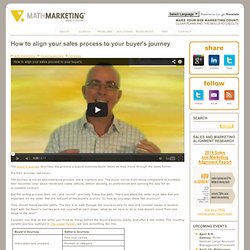

Free business marketing platform. Company Activities & Management > Company Strategy from AllBusiness. How to Pitch Anything in 15 Seconds [video] Marketing for the Extremely Shy - Dorie Clark. Let’s face it: selling isn’t for everyone.

Some people, including executives and entrepreneurs, panic at the thought of “putting themselves out there,” especially when that means asking colleagues for referrals or reaching out to past clients to drum up new business. In the past few weeks, I’ve been approached by several company leaders clamoring for help. They know they need to bring clients in the door, but don’t want to look desperate or needy or smarmy. Isn’t there a path to growth that doesn’t involve wearing a snakeskin suit? I usually start by pushing back: being a leader means being a rainmaker — period. This can take some mental adjustment. So some shy leaders — through gritted teeth — recognize they have to step up.
But for other executives and entrepreneurs, even if it means lost business, they’re not going to budge: they don’t want to do anything that makes them feel uncomfortable or look (to their eyes) like a hawker. Recognize the difference between marketing and sales. Three Myths about What Customers Want - Karen Freeman, Patrick Spenner and Anna Bird. By Karen Freeman, Patrick Spenner and Anna Bird | 9:10 AM May 23, 2012 This post is the last in a three-part series.

Most marketers think that the best way to hold onto customers is through “engagement” — interacting as much as possible with them and building relationships. It turns out that that’s rarely true. In a study involving more than 7000 consumers, we found that companies often have dangerously wrong ideas about how best to engage with customers.
Consider these three myths. Myth #1: Most consumers want to have relationships with your brand. Actually, they don’t. How should you market differently? First, understand which of your consumers are in the 23% and which are in the 77%. Myth #2: Interactions build relationships. No, they don’t. Of the consumers in our study who said they have a brand relationship, 64% cited shared values as the primary reason. Myth #3: The more interaction the better. How to build a great business (from a good one) Standing out from the crowd is tough when your competitors are also working towards the same end.

Occasionally, though, a business that has been doing 'fine' suddenly starts doing better than fine. In fact, it goes from being good to great. For some, this success is temporary and they soon slink back into the pack. A select few make a significant shift and go on to achieve sustained greatness. How does a good business become a great one? Collins' team of researchers drew up a list of extraordinary companies that met three criteria - they had to have performed at or below the rest of the market for 15 years; then undergone a change; and then significantly outperformed the stock market for 15 years or more.
Collins wanted to understand what these businesses had done to transform themselves into market leaders. Disciplined people Adopting level 5 leadership: build enduring greatness through a paradoxical blend of personal humility and professional will. Disciplined thought. How to align your sales process to your buyer's journey. The buyer's journey describes the process a typical business buyer takes as they move through the sales funnel.

It's their process, not yours. The journey is not an administrative process, but a cognitive one. The buyer moves from being complacent to troubled, then becomes clear about needs and viable options, before deciding on preferences and opening the way for an acceptable contract. But the selling process does not - and cannot - precisely follow this path. There are steps the seller must take that are important for the seller that are not part of the buyer's journey. They should follow parallel paths. Consider, too, that as the seller you must do things before the buyer's journey starts, and after it has ended. Your execution should focus on the stages of the seller's journey. Your choice of tactics for your business should be those best able to move your buyer through each stage of their journey.
Consider the following tactical approach: CommLab India – Free Courses – Effective Sales Skills.